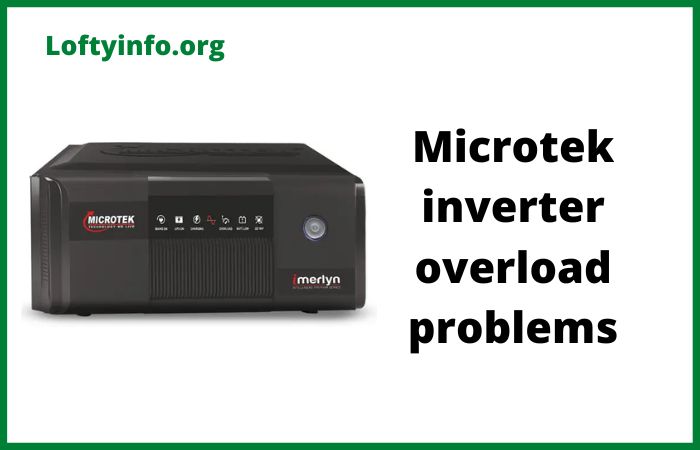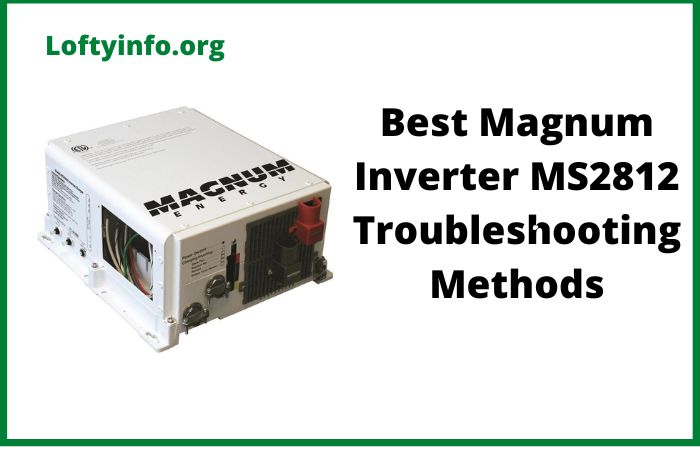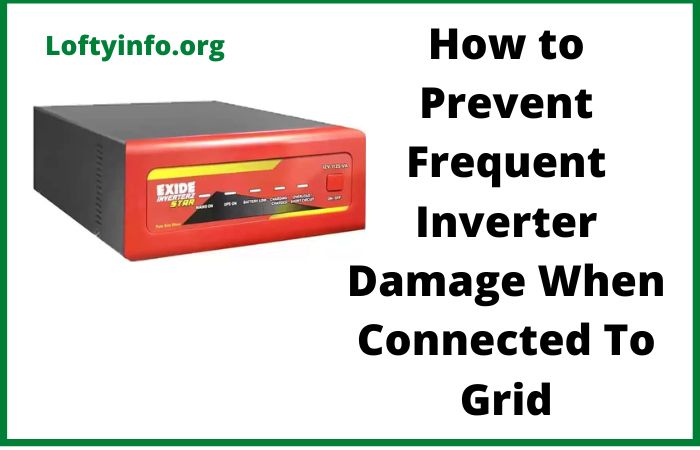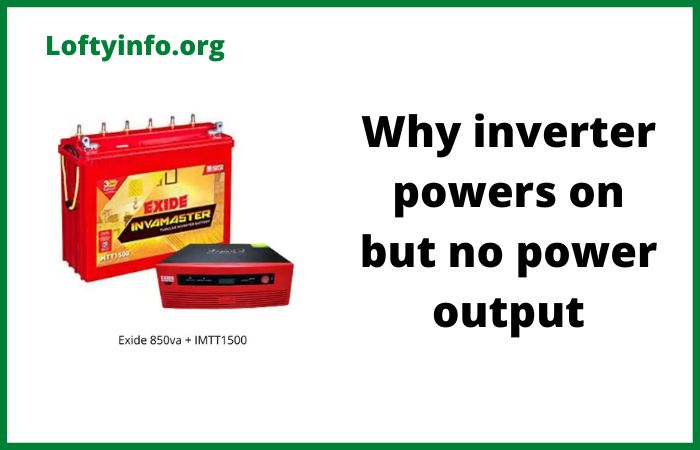Microtek Inverter Overload Problems Causes And Solutions
Microtek inverters have become essential household equipment for providing uninterrupted power supply during outages.
These devices convert battery power into electricity to run your fans, lights, refrigerators and other appliances when the main power is unavailable.
Like any electronic equipment, Microtek inverters can experience operational issues that affect their performance.
One of the most common problems users face is overload conditions that can disrupt power supply and potentially damage both the inverter and connected appliances.
Understanding overload problems is crucial for maintaining your inverter’s longevity and ensuring it operates efficiently when you need it most.
An overload occurs when the power demand from your connected appliances exceeds what the inverter can safely provide.
This situation triggers protective mechanisms built into the system but frequent overloading can reduce the lifespan of your inverter and battery while causing inconvenient power disruptions.
This comprehensive guide will help you identify, troubleshoot and resolve the most common Microtek inverter overload problems.
Microtek Inverter Overload Problems
1) Exceeding Rated Capacity
The most straightforward cause of inverter overload happens when the total wattage of connected appliances surpasses the inverter’s maximum output rating.
Every Microtek inverter has a specific capacity measured in volt-amperes or watts that indicates how much power it can safely deliver.
When users connect too many devices simultaneously or operate power-hungry appliances beyond the inverter’s capability, the system automatically detects this excessive demand.
The root cause lies in poor load management and inadequate planning before purchasing the inverter. Many homeowners buy inverters without properly calculating their actual power requirements during outages.
For instance, running a 1500-watt water heater, a 150-watt refrigerator, several LED bulbs and ceiling fans simultaneously on an 850VA inverter will definitely cause overload. Each appliance draws specific wattage and the cumulative load determines whether your inverter can handle the demand.
To troubleshoot this problem, first calculate the total wattage of all appliances you typically use during power cuts.
Check the power rating label on each device or refer to their user manuals. Add up these values to get your total load requirement. Compare this figure with your Microtek inverter’s rated capacity.
If your load exceeds the inverter capacity, you need to reduce the number of connected appliances.
Disconnect high-power devices like electric irons, microwaves, air conditioners and water heaters from the inverter circuit.
Prioritize essential appliances such as lights, fans and refrigerators. You can also consider upgrading to a higher capacity Microtek inverter if your power needs have increased since the original installation.
When selecting a new inverter, experts recommend choosing a model with at least 25-30% more capacity than your calculated load to account for power surges and future expansion.
2) High Surge Current from Inductive Loads
Appliances with motors and compressors create a unique overload challenge even when their running wattage falls within the inverter’s capacity.
Devices like refrigerators, washing machines, air conditioners, water pumps and mixers require significantly more power during startup than during normal operation.
This phenomenon is called surge current or starting current and it can be 2 to 3 times higher than the appliance’s rated running power.
The cause stems from how electric motors work. When a motor starts, it needs extra energy to overcome inertia and begin rotating.
This momentary power spike lasts only a few seconds but it can overwhelm an inverter that lacks adequate surge capacity.
Even if your refrigerator consumes 150 watts during normal operation, it might demand 450 watts for the first few seconds when the compressor kicks in.
If your inverter cannot provide this surge power, it will detect an overload condition and shut down to protect itself.
Troubleshooting surge-related overloads requires understanding your appliances’ startup characteristics and your inverter’s surge handling capability.
Check your Microtek inverter’s specifications for its peak power or surge power rating, which is usually higher than its continuous power rating.
Compare this with the startup requirements of your motor-driven appliances.
If the surge demand exceeds the inverter’s capability, you need to manage when these appliances start. Avoid turning on multiple inductive loads simultaneously.
For example, do not switch on your washing machine and water pump at the same time. Stagger the operation of these devices by a few minutes to prevent surge currents from combining.
If the problem persists despite load management, you may need to upgrade to a Microtek inverter with higher surge capacity.
Some models can handle 3 to 4 times their rated capacity for brief periods specifically to accommodate motor startup demands.
3) Low Battery Voltage Creating False Overload Signals
A particularly confusing problem occurs when your Microtek inverter displays overload warnings even though the connected load is well within its capacity.
This false overload indication often results from insufficient battery voltage rather than actual excessive power demand.
When battery voltage drops below the inverter’s minimum operating threshold, the system struggles to provide stable power and may misinterpret this low voltage condition as an overload.
The underlying cause relates to how inverters convert DC battery power to AC household power.
This conversion process requires adequate input voltage from the battery. If the battery is deeply discharged, aged, poorly maintained or undersized for the inverter, it cannot supply sufficient voltage under load.
When you switch on appliances, the battery voltage drops sharply due to its weak condition.
The inverter’s control circuitry detects this voltage drop and may trigger overload protection thinking the appliances are drawing too much power, when actually the battery simply cannot deliver what the inverter needs.
To troubleshoot this issue, start by measuring your battery voltage using a multimeter. A healthy 12-volt battery should read between 12.4 to 12.8 volts when fully charged and at rest.
If the reading is below 12 volts, the battery needs charging. Connect the inverter to mains power and allow the battery to charge completely for several hours.
Once fully charged, test the inverter again with your normal load. If the overload warning disappears after charging, the problem was indeed low battery voltage rather than actual overload.
If the overload persists even with a fully charged battery, check the battery terminals for corrosion or loose connections.
Clean the terminals with a wire brush and ensure all connections are tight and secure.
Corroded or loose connections create resistance that causes voltage drops when current flows.
Also inspect your battery cables for adequate thickness. Undersized cables cannot carry the required current and cause voltage drops that mimic overload conditions.
Refer to your inverter manual for the recommended cable gauge based on the distance between battery and inverter.
For batteries that repeatedly fail to hold charge or show voltage below 11.5 volts even after prolonged charging, replacement is necessary.
Batteries typically last 3 to 4 years with proper maintenance but can fail earlier if frequently discharged deeply or kept in hot environments.
4) Internal Circuit Faults and Component Failures
Sometimes Microtek inverters display overload conditions due to internal malfunctions rather than external factors.
The inverter’s circuit board contains numerous electronic components including transistors, capacitors, MOSFETs and integrated circuits that control power conversion and protection functions.
When these components fail or degrade, the inverter may incorrectly detect overload conditions even with no load connected or with loads well within safe limits.
The cause of internal faults varies from component aging to manufacturing defects, power surges, overheating damage or moisture ingress.
For example, faulty voltage sensing circuits may send incorrect feedback to the control system, making the inverter think there is an overload when there is not.
Failed switching transistors can short-circuit internally, creating actual circuit overloads that trigger protection mechanisms.
Degraded capacitors lose their ability to filter and smooth power flow, causing voltage irregularities that the system interprets as overload conditions.
These internal problems are particularly frustrating because the overload indication appears without any apparent external cause.
Troubleshooting internal faults requires systematic elimination of external factors first. Disconnect all appliances from the inverter output.
Ensure the battery is fully charged and properly connected. Turn off the inverter, wait a few minutes and turn it on again without any load connected.
If the overload warning still appears with zero load, you have confirmed an internal fault. Check if pressing the inverter’s reset button clears the fault.
Some Microtek models require you to turn off the mains power switch, wait 10 seconds and then turn it back on to complete the reset process.
If the overload warning returns immediately after reset with no load, the inverter requires professional repair.
Do not attempt to open the inverter or repair internal components yourself as this is dangerous and will void your warranty.
Contact Microtek customer service or an authorized service center for diagnosis and repair. Describe the problem clearly, mentioning that overload occurs even without any connected load and after battery charging.
The technician will need to test various circuit board components with specialized equipment to identify which part has failed.
Common repairs include replacing blown transistors, failed capacitors or damaged control ICs. If your inverter is still under warranty, the manufacturer should repair or replace it at no cost.
5) Cooling Fan Failure Leading to Overheating
Microtek inverters generate significant heat during the power conversion process, especially when handling heavy loads.
To prevent damage from overheating, these inverters include cooling fans that activate automatically when temperature rises beyond safe limits.
The cooling fan pulls cool air through the inverter and expels hot air to maintain optimal operating temperature.
When this cooling system fails, the inverter rapidly overheats and its thermal protection circuitry triggers an overload shutdown to prevent permanent damage to sensitive electronic components.
The cause of cooling fan failure can be mechanical or electrical.
Accumulated dust and debris can clog the fan blades and air vents, preventing proper airflow even when the fan motor runs.
The fan motor itself may fail due to worn bearings, damaged windings or disconnected power supply.
Sometimes the fan’s thermal sensor or control circuit malfunctions, preventing the fan from activating when needed.
Operating the inverter in poorly ventilated spaces, placing it too close to walls or storing it in hot environments exacerbates overheating issues.
When the inverter cannot dissipate heat effectively, its internal temperature climbs rapidly under load.
The system interprets this overheating as a dangerous condition and displays overload warnings before shutting down to protect itself.
To troubleshoot cooling fan problems, first listen carefully when your inverter operates under load.
You should hear the fan running with a steady humming sound. If the fan is silent or makes unusual grinding or rattling noises, there is a mechanical problem. Inspect the fan area for dust accumulation, spider webs or other obstructions.
Turn off and unplug the inverter before cleaning. Use a dry soft brush or compressed air to clean the fan blades, heat sinks and ventilation openings. Do not use water or liquid cleaners on the inverter.
After cleaning, check if the fan spins freely by gently rotating it with your finger (with power off). If the fan does not spin easily or feels stuck, the motor bearings may be worn and the fan needs replacement.
For fans that spin freely but do not operate when the inverter is on, check the electrical connections between the fan and the circuit board. Loose or corroded connections prevent power from reaching the fan motor.
Ensure the inverter is installed in a cool, well-ventilated location away from direct sunlight and heat sources.
Maintain at least 6 inches of clearance on all sides for proper airflow. The ambient temperature should not exceed 40 degrees Celsius for optimal performance.
If the fan still does not work after cleaning and ensuring good ventilation, it requires replacement.
Contact Microtek service for a genuine replacement fan compatible with your inverter model.
Do not operate the inverter continuously without a working cooling fan as this will cause permanent damage to expensive components like MOSFETs and transformers.
6) Faulty Wiring and Connection Issues
Poor electrical connections and inadequate wiring between the inverter, battery and household distribution board create resistance in the power path that can manifest as overload problems.
This issue is particularly common in inverter installations where proper cable sizing and connection techniques were not followed.
Undersized cables cannot carry the required current without excessive voltage drop.
Loose terminal connections create high-resistance contact points that heat up and reduce power delivery.
Corroded connections behave similarly, adding resistance where clean metal-to-metal contact should exist.
The cause often traces back to improper installation or deterioration over time.
Many installers use cables that are too thin for the inverter’s power rating, especially for the DC connections between battery and inverter which carry very high currents.
Loose connections occur when terminal screws are not tightened adequately during installation or become loose due to thermal expansion and contraction cycles.
Corrosion develops on exposed copper terminals in humid environments or where dissimilar metals contact each other, creating an oxidized layer that impedes current flow.
When you switch on appliances, the high current demand combined with the resistance from poor connections causes significant voltage drop.
The inverter senses this voltage drop and interprets it as overload because it cannot maintain proper output voltage under load.
To troubleshoot wiring problems, start by inspecting all visible connections while the inverter is off and disconnected from mains power.
Check the battery terminals for white, green or blue corrosion deposits.
Clean corroded terminals using a wire brush and neutralizing solution like baking soda mixed with water.
Rinse with clean water and dry thoroughly before reconnecting. Ensure all terminal connections are tight by checking each screw or bolt with the appropriate tool.
The connections should be firm but not over-tightened which can damage the terminals. Inspect the battery cables for adequate thickness.
The cable gauge should match the specifications in your inverter’s installation manual, typically 10 to 16 mm² for most residential inverters depending on cable length and inverter capacity. If your cables are thinner than recommended, they need replacement with properly sized cables.
Check for damaged cable insulation, exposed wires or signs of overheating like discolored or melted plastic.
These indicate serious problems that require immediate attention and cable replacement.
For the AC wiring between inverter and distribution board, verify that circuit breakers are rated correctly and connections are secure at both the inverter output terminal and the distribution box input.
Loose neutral connections are particularly problematic and can cause various strange behaviors including false overload indications.
If you lack electrical expertise, hire a qualified electrician to inspect and correct wiring issues.
Proper wiring is crucial not just for eliminating overload problems but also for safety, as poor connections can cause fires.
Benefits of an oversized solar array
Best Budget Solar Generator for Camping
Effects of an inverter overloads
How inverter overload affects performance
What to do when Overload warning shows on Inverter
Understanding common luminous zelio 1100 inverter overload problems
Solutions to Luminous inverter auto cut problem






